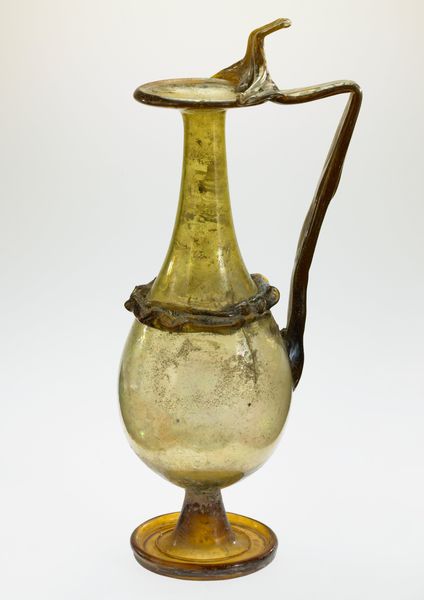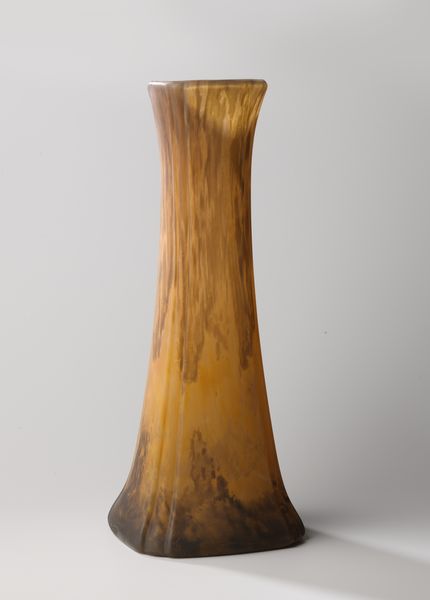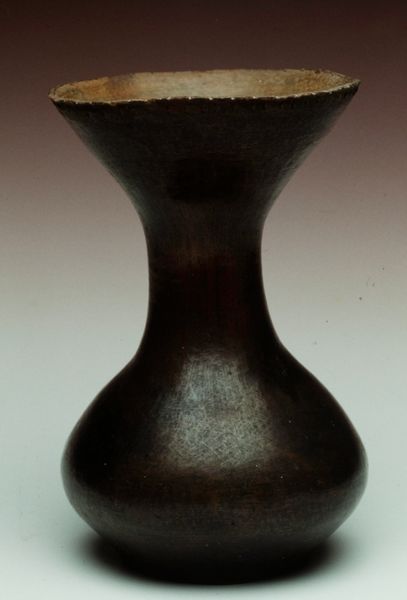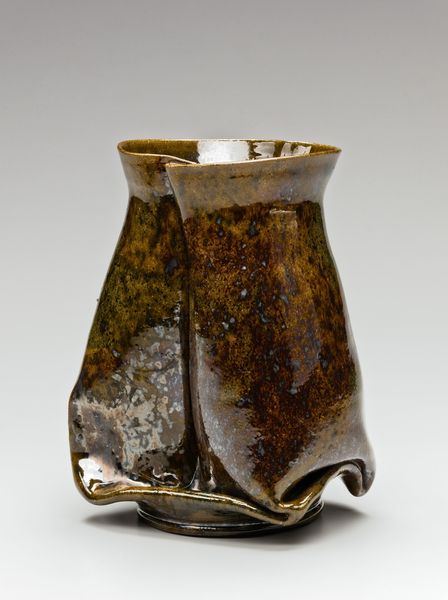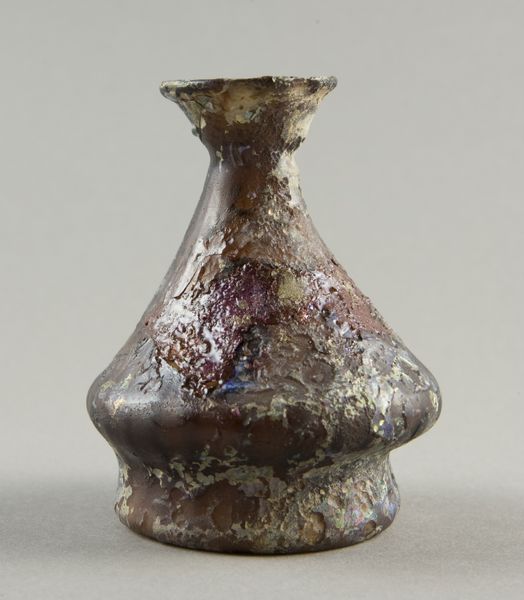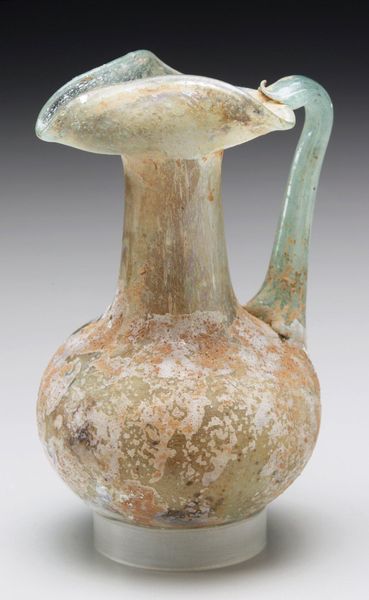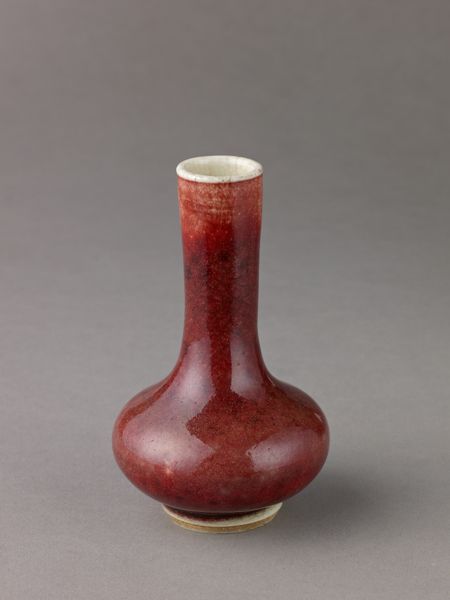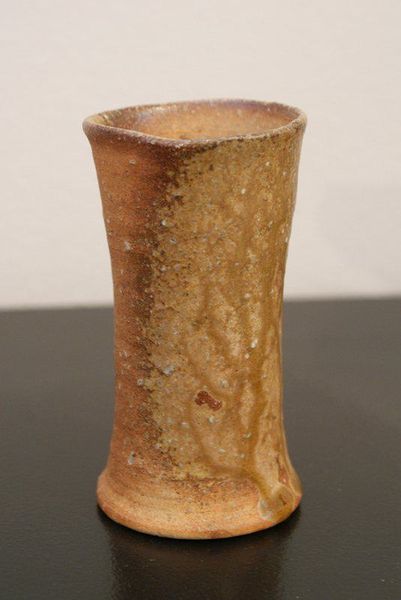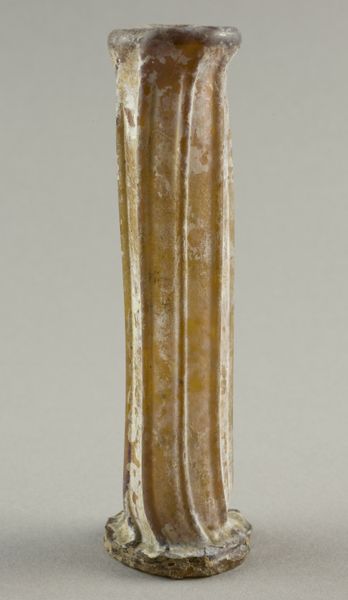
ceramic
#
asian-art
#
ceramic
#
japan
#
stoneware
#
ceramic
#
decorative-art
Dimensions: 7 7/8 x 3 1/2 x 4 in. (20 x 8.89 x 10.16 cm)
Copyright: No Known Copyright
Curator: Standing before us is a piece entitled Vase (kabin) crafted circa the 20th century by Hamada Shōji. It’s currently held here at the Minneapolis Institute of Art. Editor: Immediately, what strikes me is the bold asymmetry of the glaze. The way the dark brown and creamy white collide feels almost haphazard, but the form itself is very controlled. Curator: Precisely. Hamada was a key figure in the Mingei movement, which championed hand-crafted art against industrialization. This vase, made of stoneware and glazed ceramic, speaks to that philosophy. Editor: The visible process is key here. You can see the potter's marks, the subtle drips of the glaze. It’s not striving for flawless perfection but celebrating the inherent beauty of the materials. It really makes me think about the role of the potter and their labor in producing it. Curator: Absolutely. Hamada was deeply influenced by Bernard Leach, and together they helped bridge Eastern and Western craft traditions. This vase embodies that exchange, drawing on Japanese pottery techniques while engaging with a modernist aesthetic. His pieces were integral in shaping craft as high art during this time period, challenging art's definition in museum spaces like this one. Editor: I notice those small loop handles near the top. Were they intended for functional use or are they purely decorative? They seem almost too small to grip. It might point to the idea that the vase served less as a utility and more as a vehicle for Hamada's exploration of form and surface treatment. Curator: It is difficult to determine its functional value from a purely visual experience. These were created as decorative stoneware, but could arguably become something more within the cultural norms in the daily lives of individuals. The piece really underscores a tension, or perhaps better, a harmony between utility and artistry, between individual expression and cultural tradition. Editor: Well said. It’s that intersection, isn’t it, where the hand of the maker and the history of material collide that makes it interesting to observe and deconstruct this stoneware piece. Curator: Indeed. Considering the socio-economic dynamics during the Mingei Movement makes understanding works like this essential. Editor: It invites one to consider both labor and materiality, doesn’t it? Curator: It certainly does.
Comments
No comments
Be the first to comment and join the conversation on the ultimate creative platform.
